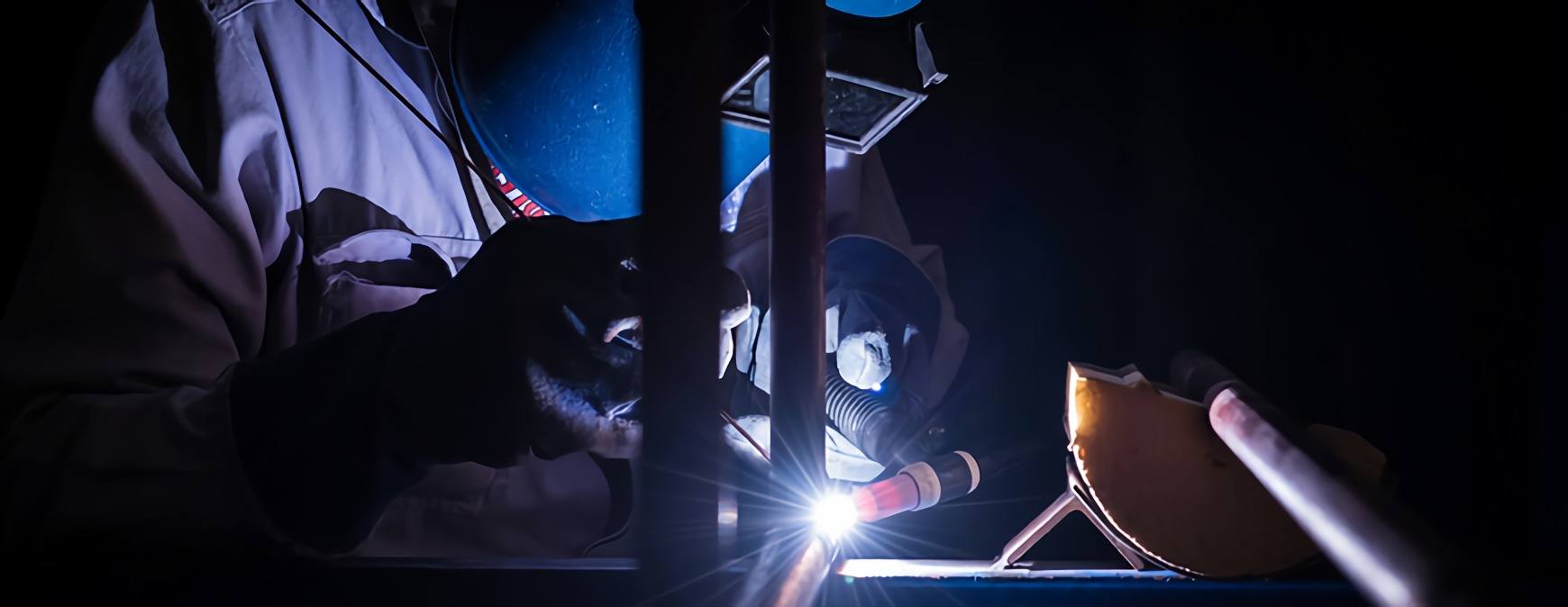TWS is a Great Training Option for Everyone
Learn more about how we can prepare you to advance your career.
Proper arc welding equipment setup is one of the first things students learn in welding training. Since metal inert gas (MIG) welding is one of the first welding processes students are generally introduced to, they often receive instruction in setting up the machine. Following are some important considerations for working with a MIG welder.
How Do MIG Welders Work?
Process
Understanding the MIG welding process can help a new welding student grasp how the machine and equipment work. The welder uses a gun for MIG welding that serves two functions: first, a metal wire connected to a direct current source is fed through the gun and acts as the electrode; second, the gun conveys a shielding gas to the weld area to protect it from atmospheric contaminants. The process is quick, efficient, and clean. For these reasons, it can be semi- or fully automated.
Equipment
MIG welders operate differently than traditional welding machines. Three components set them apart:
1. Voltage
Unlike other welding processes, MIG welders use one standard polarity and voltage type as their power source: D/C direct current and D/C electrode (+) positive. While amperage is adjusted on TIG welding machines, voltage is used to control a MIG welder’s power source.
Have You Considered a Career in the Skilled Trades?
Fill out the form to recieve a no obligation info packet.
2. Electrode
Two features of the electrode MIG welding uses differentiate it from other processes and should be considered when preparing to weld: for starters, the electrode is a consumable metal wire and should be matched to the base metal because it will become a permanent part of the weld. Since the electrode wire is semi- or fully automatically fed into the weld pool, the way in which it is transferred must also be taken into account. Depending on the transfer type, the wire might melt and drip into the weld pool, glob off into it, melt into droplets and spray the base metal, or do a combination of glob off and spray. Voltage setting and shielding gasses determine transfer type. 1
3. Shielding Gas
MIG welding uses three types of shielding gas: argon, carbon dioxide, and helium. They are typically mixed depending on the metals being welded and should be matched to the base metal and wire electrode. A welder’s selection of shielding gas can influence the properties of the arc and the penetration, strength, and mechanical characteristics of the weld. 2
How to Setup a MIG Welder
Correctly setting up a MIG welder is one of the most important parts of the process. While it’s best to read the owner’s manual for guidelines on how to setup your specific machine, the following general considerations could also prove helpful.
1. Voltage
One of the first controls on a MIG welder to check prior to welding is the voltage. The voltage setting controls the amount of heat the welding gun delivers and thus the quality of the weld. For example, the voltage influences the width and height of the weld bead: a lower voltage can result in a narrower bead, and a higher voltage a wider bead. 3
Generally, a lower voltage is better for thinner metals and a higher voltage for thicker ones. In most cases, a welder can refer to the MIG welding voltage chart that comes with the machine for guidance on selecting the correct voltage for the project.
2. Electrode
As mentioned above, a welder will want to match the electrode to the base metal. He or she should also consider the project and select the appropriate diameter of wire to use.
The wire speed and voltage setting will determine the transfer type. Wire speed can also influence the quality of the weld. Too high of a wire speed can result in distortion, burn-through, and overly wide beads. Too low of a wire speed can cause the bead to come out convex and to have inadequate tie-in at the toes of the weld. 4
3. Shielding Gas
For help selecting the right shielding gas for a project, speak to a welding instructor or a clerk at the supply store.
Once the correct gas has been chosen, start with the setting at between 25 and 30 CFH, possibly higher if welding outdoors where the wind could pick up. If porosity or discoloration starts to appear, the gas pressure may be too high. 5
Prepare for Successful MIG Welds
As you can see, there are some important considerations when setting up a MIG welder. A young welder will also want to take into account MIG welding safety procedures and process tips to ensure successful welds.
1 – https://www.bakersgas.com/weldmyworld/2011/11/21/mig-welding-transfer-types/
2 – https://www.gowelding.org/welding/mig-gmaw/
3 – https://www.millerwelds.com/resources/article-library/miggmaw-101-setting-the-correct-parameters
4 – https://www.millerwelds.com/resources/article-library/troubleshooting-mig-before-and-after-you-weld
5 – https://www.bakersgas.com/weldmyworld/2011/09/16/basic-welder-settings-mig-welding/
This blog has been labeled as archived as it may no longer contain the most up-to-date data. For a list of all current blog posts, please visit our blog homepage at https://www.tws.edu/blog/







